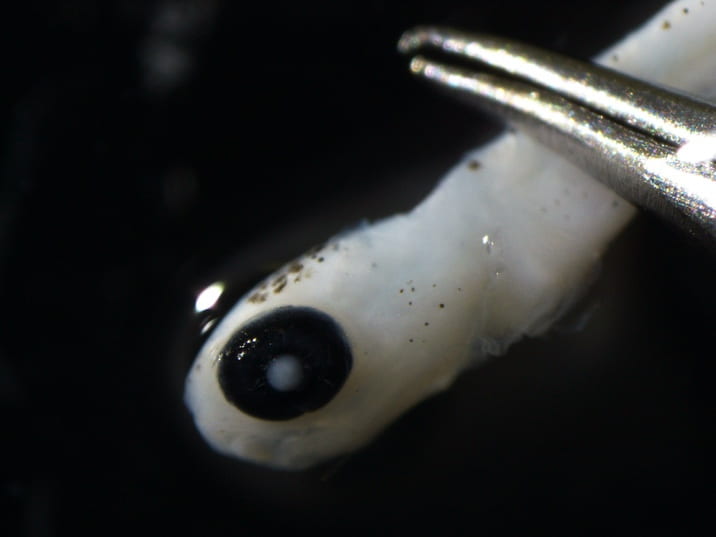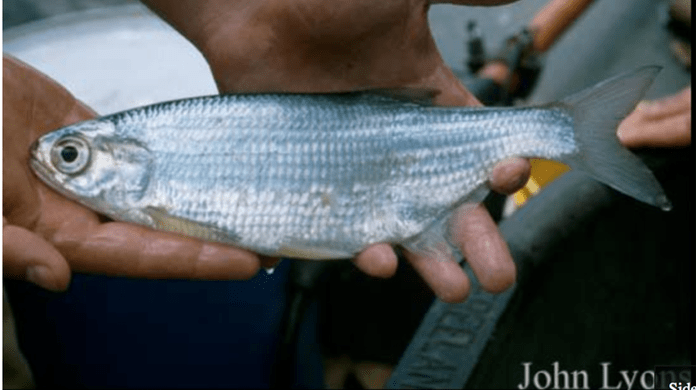Key Characteristics:
- Large eye
- 29-35 preanal myomeres
- 16+ postanal myomeres
- Postanal pigmentation profuse, 24>postanal myomeres

Larval Mooneye. United States Fish Wildlife Service. Marian Shaffer. 2017.

Larval Mooneye. United States Fish Wildlife Service. Marian Shaffer. 2017.

Larval Mooneye. United States Fish Wildlife Service. Marian Shaffer. 2017.

Larval Mooneye. United States Fish Wildlife Service. Marian Shaffer. 2017.
- Body not elongated, eel-shaped, round in transverse section, uniformly pigmented (1B)
- Chin barbels absent (3B)
- Snout short, its length usually less than 10% TL; median fins otherwise (5B)
- Median fins or finfolds showing distinct separation (7B)
- No adipose fin, or demarcation of one, in finfold (10B)
- Preanal myomeres greater than or equal to postanal myomeres (14A)
- Preanal myomeres significantly greater than postanal myomeres (difference greater than five myomeres) (15B)
- Postanal myomeres greater than 10 (26B)
- Preanal myomeres usually greater than 30 (28B)
- Preanal myomeres usually less than 40 (29B)
- Preanal length less than or equal to 67% TL; snout short and blount (31B)
- Adipose fin absent; anal fin rays greater than 20; body relatively unpigmented (32B)
- Hiodontidae
Adult History
- Physical Description
- Rounded dorsal profile, long anal fin, dorsal fin (11-12 rays) origin is even with anal fin origin, silver in color, short snout, large eye, teeth in the mouth, 52-57 lateral line scales, and a fleshy unscaled keel extends from the anus to the pelvic fin
- Spawning Habitat
- Large & clear streams, rivers, or lakes
- Not tolerant or turbid water conditions
- Spawning Substrate
- Eggs are deposited over gravel or swift water locations
- Spawning Behavior
- Broadcast Spawners
- Time of Year
- April – June in Lake Michigan
- Spawning typically takes place at water temperatures of 45 – 60°F
- Diet
- Terrestrial and aquatic insects, crustaceans, mollusks, and small fish

